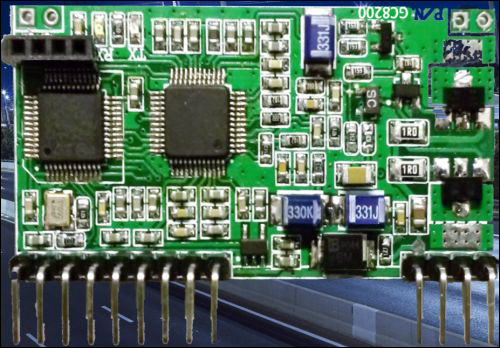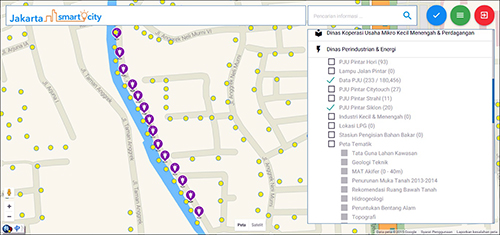The Indonesian city of Jakarta is in the first of multiple phases implementing smart streetlights that will be able to dim based on environmental conditions, as well as send information about their functionality to the city’s command center, enabling predictive maintenance. GridComm‘s Street Light Management Solution (SLMS) allows the city to monitor power consumption and the streetlights’ working conditions, both in real time and historically, and to program the lights to dim at specific times. GridComm partnered with LED lighting provider Siklon Energy Nusantara, which installed the Internet of Things technology.
The solution employs powerline communication (PLC) two-way communication with a gateway device, utilizing the same wire line used to power the LED lights. The system also supports wireless or Ethernet connections between a gateway and a cloud-based server.

GridComm was launched in 2012 by four co-founders who had helped to design communication chips used in the utilities industry. “We saw an immediate opportunity for power line communication,” says co-founder Mike Holt, in order to create grids in which utilities or municipalities would be able to remotely view what was happening with their network of lights. However, he says, wireless systems didn’t work well in areas where they were most needed, such as in Asia, where electrical noise prevented the wireless transmission of data.
“Streetlights are more than just devices that light streets,” says Holt, explaining that they can also serve as good places on which to mount sensors for measuring traffic, weather, pollution or light levels. These could be installed on the poles, he says, but would need a way to send that data back. Since wireless service is not always reliable, gridComm’s co-founders built a system for transmitting data via the existing powerline. Utilities utilize such wired system to pull data from power meters.
“Existing power line solutions use a single channel for communication over the copper wire,” Holt says. The gridComm system, on the other hand, consists of 18 independent channels on which data can flow on the copper wire.
At each streetlight, Siklon Energy Nusantara is installing a PLC Smart Light Controller module behind the lamp’s existing driver. Each module has its own IP address so that it can be individually identified and addressed, thereby enabling a user to send and receive data from that device, as well as deliver commands for controlling illumination levels. The technology works with LED lights, as well as with sodium vapor or other types of high-intensity discharge (HID) lamps.
The power lines to the lamps go back to a central box into which Siklon Energy Nusantara installs a gateway device known as a master light controller. The controller captures data from up to 200 lights, and then forwards that information to software on GridComm’s cloud-based server via either 3G cellular service or an Ethernet connection.
The city of Jakarta contains 250,000 streetlights that may be eventually integrated into the system. It began with a trial of 100 lights during the first quarter of 2015. Once that system proved to work well, the city launched a wider deployment, starting with 10,000 lights in a single neighborhood, several thousand of which have been equipped to date.

During the first phase, the SLMS is analyzing each lamp’s operational status—on, off or a dimming level—as well as the power consumption based on kilowatt per hour, voltage and current. The system also includes each lamp’s GPS location, which a worker enters into the system during the PLC Smart Light Controller module’s installation, and can present that location on a map to users of the SLMS software.
The second phase of the deployment will include enabling the city to dim lighting at a single lamp or across a neighborhood of lamps, based on a variety of information. GridComm is currently in the process of developing a feature in the smart streetlight system to integrate IBM‘s Bluemix big data analytics to then perform active real-time dimming based on parameters from sensors and third-party data, such as traffic information or weather conditions, as well as sensor data about ambient light. This data can be tailored according to the needs of each individual street or block.
“Their system offers more capabilities than cities can initially digest,” Holt states. Customers typically want to be able to turn streetlights on and off, he says, and adding the dimming capability tends to be a popular way to delve into more intelligence in the lighting. Once a city is comfortable with the system, he adds, it can begin to deploy analytics to determine whether lights are working properly, which ones might not need to remain on at certain times, where additional lights might be required and what causes certain lights to burn out.


